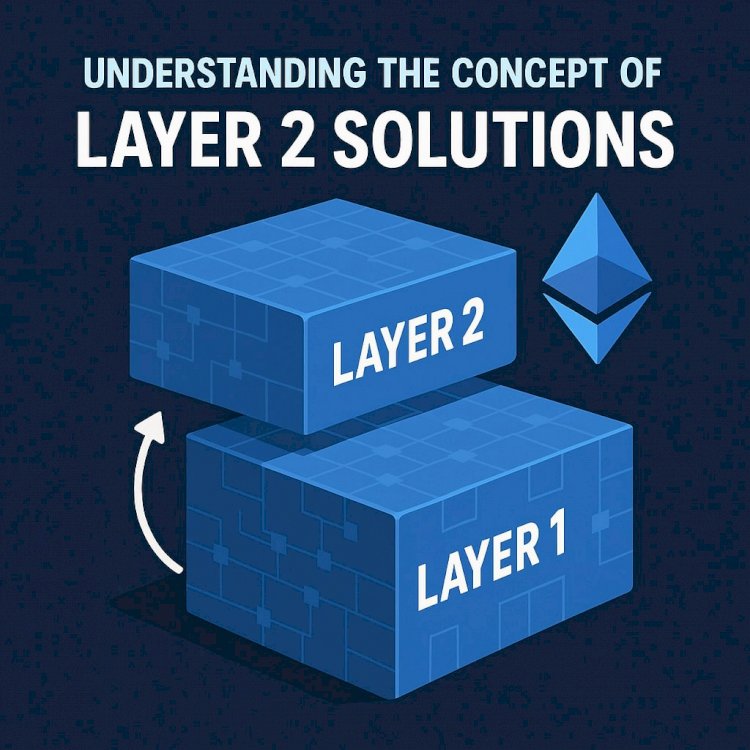Understanding the Concept of Layer 2 Solutions

By Dr. Pooyan Ghamari, Swiss Economist and Visionary
In the fast-moving world of blockchain technology, one of the most enduring challenges has been the “scalability trilemma,” which refers to the difficulty of achieving scalability, security, and decentralization simultaneously. While base-layer blockchains such as Bitcoin and Ethereum provide robust security and decentralization, they often struggle with transaction speed and cost efficiency. To address these limitations, Layer 2 solutions have emerged as a critical innovation, offering new ways to increase performance while maintaining the security and trust of the base layer.
What Is a Layer 2 Solution?
A Layer 2 solution, often abbreviated as L2, is an additional protocol or framework built on top of a base blockchain, also called Layer 1. The core purpose of Layer 2 is to process transactions and computations away from the congested main chain while anchoring results back to it for final settlement and security.
To illustrate, consider the base blockchain as a busy highway where traffic congestion is a constant problem. Layer 2 acts like a system of overpasses and side roads, allowing vehicles to move more quickly while still re-entering the highway at designated checkpoints. This ensures that efficiency is achieved without compromising the integrity of the overall system.
Why Layer 2 Matters
There are several reasons why the development and adoption of Layer 2 solutions are so important:
-
Overcoming Scalability Limits: Popular blockchains can only handle a limited number of transactions per second. As user adoption grows, fees spike and transactions slow down. Layer 2 systems relieve this pressure.
-
Protecting the Blockchain Trilemma: Attempting to scale a blockchain directly at Layer 1 often risks weakening security or decentralization. Layer 2 solutions scale transaction capacity while still relying on Layer 1’s consensus for security.
-
Cost Efficiency: By moving bulk processing off-chain or compressing transaction data, L2s drastically lower fees, making microtransactions and broader use cases economically viable.
-
Enabling New Applications: High throughput and low costs allow developers to explore areas such as gaming, micropayments, social platforms, and more complex financial services.
The Main Types of Layer 2 Solutions
While all L2 systems share the same goal, their technical approaches differ significantly. Four prominent types stand out.
-
Rollups: These bundle many transactions off-chain and then post a compressed summary back to the base chain. Optimistic rollups rely on fraud-proofs, while zero-knowledge (zk) rollups use cryptographic proofs. Both dramatically reduce costs and increase throughput.
-
Sidechains: These are independent blockchains running parallel to Layer 1, connected by bridges. They offer flexibility and customization but often come with weaker security guarantees compared to the base chain.
-
State Channels: Here, two or more participants lock assets on the main chain and then transact off-chain instantly and cheaply. The final state is eventually settled back on the base layer. This is ideal for frequent, repeated transactions.
-
Plasma: Plasma frameworks create “child chains” anchored to the base chain. They can process large volumes of transactions but have challenges with data availability and user exits.
Trade-Offs and Challenges
Layer 2 systems are not without risks. While they deliver speed and efficiency, they also introduce new complexities.
-
Security Assumptions: Some designs, particularly sidechains and certain bridges, require additional trust beyond what the base chain offers.
-
Data Availability: If transaction data is not readily accessible, users may be exposed to risks when verifying or withdrawing funds.
-
Exit Delays: Many solutions introduce waiting periods when moving funds back to Layer 1, especially in dispute-resolution mechanisms.
-
User Experience: Switching networks, bridging assets, or waiting for withdrawals can be confusing for mainstream users.
-
Fragmentation: With many Layer 2 solutions emerging, liquidity and users can become scattered across ecosystems.
Real-World Examples
Several major projects already demonstrate how Layer 2 can work in practice.
-
Ethereum Rollups such as Optimism, Arbitrum, and zkSync are lowering transaction fees and making decentralized applications more accessible.
-
Polygon, often described as a sidechain, supports fast, low-cost transactions for a wide range of decentralized applications.
-
Bitcoin’s Lightning Network uses payment channels to enable instant, cheap transfers, particularly suited for micropayments.
These examples show how Layer 2 is driving broader adoption by reducing barriers to entry for both developers and end-users.
Economic and Social Implications
From an economic perspective, Layer 2 solutions expand the possibilities of blockchain technology in several ways.
They reduce costs, opening the door for small entrepreneurs and individuals to use blockchain services previously dominated by larger players. They also enhance liquidity and efficiency in decentralized finance, while fostering innovation through lower barriers to experimentation.
At the same time, these advancements bring new regulatory and governance questions. Who oversees bridges, who guarantees data availability, and how disputes are managed will become pressing issues as adoption grows.
The Road Ahead
The future of Layer 2 solutions is promising. Zero-knowledge rollups are rapidly evolving, offering stronger security guarantees and faster transactions. Ethereum’s own roadmap, which emphasizes rollup-friendly upgrades, will accelerate adoption. Meanwhile, user experience is improving as wallets and platforms abstract away technical complexities.
As these systems mature, Layer 2 is likely to extend far beyond financial applications. We may see large-scale adoption in supply chains, healthcare, digital identity, and even voting systems.
Layer 2 solutions represent a transformative step in the blockchain journey. They offer a way to overcome the limitations of base layers while maintaining trust and security. Yet they must be implemented carefully, balancing innovation with reliability.
In my view, the promise of Layer 2 lies not only in technical efficiency but also in its ability to expand inclusion, enabling more individuals and enterprises to participate in decentralized systems. If designed with foresight, these solutions could unlock blockchain’s true potential to reshape economies and societies.
About the Author
Dr. Pooyan Ghamari is a Swiss economist and visionary known for his work at the intersection of economics, blockchain, artificial intelligence, and innovative global finance. He advocates for sustainable, inclusive, and forward-thinking applications of emerging technologies.

 content-team
content-team 


















